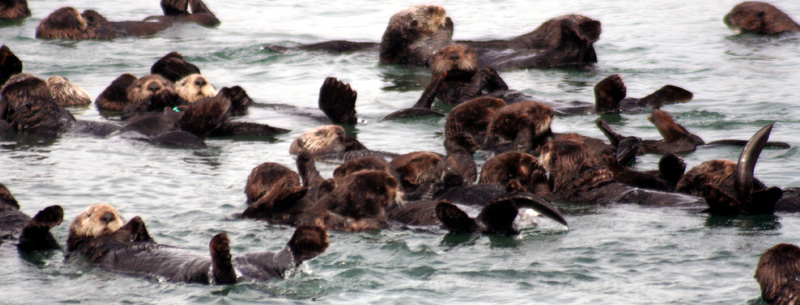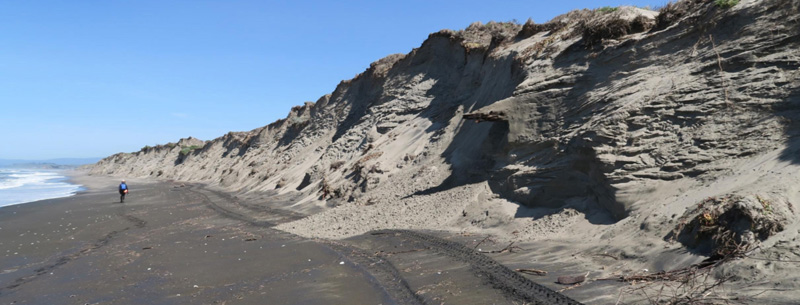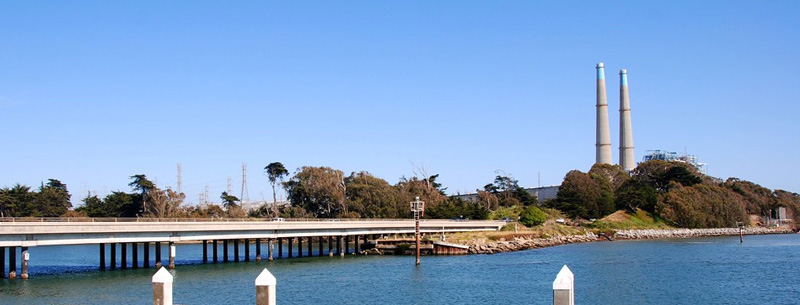The sea otters are so close you can hear one munching a crab, making a cracking sound like a kid with a bag of sunflower seeds. It’s a cool, gray morning near the tiny town of Moss Landing, CA, and I’m sitting in a flatbottom boat with 15 other passengers, gliding across the waters of Elkhorn Slough. The otters—27 of them in this particular group—seem wholly unconcerned with us. A mother otter nurses her pup; another rolls in the water. Some are brown, some streaked with gold.
“See? There are some natural blondes in California,” says Yohn Gideon, who leads ecological tours of the winding seven-mile estuary. Minutes later, he points to a long-billed curlew with a saberlike nine-inch beak. “He’s the Jimmy Durante of the slough,” says Gideon, whose repertoire of corny jokes is almost as impressive as his sharp eye for wildlife.

Not that you need a particularly sharp eye to spot creatures around here. California’s largest estuary after San Francisco Bay, Elkhorn Slough is a magnet for animals, including harbor seals and bat rays, sea lions and red-legged frogs. And then there are the birds. Over 340 species have been identified in the slough, and experts have counted 32,000 individual birds here in a single day. “Based on quantity and variety, this is one of the premier birding spots in California,” says Andrea Jones, director of the Audubon Society’s California Important Bird Areas program.
So why are there so few people? In the rush to Monterey, 20 miles to the south, or Santa Cruz, 20 miles to the north, relatively few people stop at Moss Landing. But with pristine beaches, tidal wetlands, fresh seafood, and eclectic antique stores, this historic town is a Central Coast jewel. “I wish I had a dollar for every time someone said they had no idea this was here,” Gideon says.
In 1866 Charles Moss, a sea captain from Texas built a wharf on Monterey Bay northwest of Salinas, and the adjoining settlement took his name. Moss Landing was a commercial harbor, then a whaling station, and finally a fishing village. Sample the local catch—crab, squid, lingcod—in a bowl of cioppino at Phil’s Fish Market & Eatery (named for owner Phil DiGirolamo), a lively restaurant in a seaside warehouse. “Cioppino is one of the great American dishes, and Phil is one of the great practitioners,” said Food Network star Bobby Flay when DiGirolamo bested him at cioppino making on an episode of Flay’s show, Throwdown.
After a hearty lunch, wander the antique shops that line Moss Landing Road. Highlights include Promenade Deck, where the inventory on the day I was there ran to weathered cowboy boots, a 1938 edition of Black Beauty, and handsome old fishing rods. For the high-end shopper looking for, say, a 1910 carousel horse, there’s Hamlin Antiques.
The beaches are another draw. Moss Landing State Beach, protected from the wind by dunes, is a popular picnicking spot. (Grab sandwiches at Surf City Coffee.) On the long Salinas River State Beach, you can take a horseback ride, surf cast for perch, or, as I did, sit and watch a seemingly endless stream of brown pelicans flying over the waves. You might even see a whale. Just offshore is the Monterey Canyon—the marine equivalent of the Grand Canyon—where the ocean floor plunges one mile. Because the vast crevasse teems with creatures, the area is a popular feeding ground for blue and gray whales, and whale-watching tours run year-round.

To see other marine mammals, though, head to the Slough’s sheltered waters. You can learn all you ever wanted to know about the area at the visitor center of the Elkhorn Slough National Estuarine Research Reserve, which offers rich exhibits and naturalist-guided tours. From here it’s an easy hike to the panoramic views on knobby Hummingbird Island. An even easier trail leads through coast live oaks and marshlands to Parsons Slough Overlook, where bird-watchers once set a North American record by sighting 116 species in a day.
But there’s nothing like being on the slough, in a kayak (available for rent) or a pontoon boat. During Gideon’s two-hour tour, we see 77 otters, 125 harbor seals, 557 sea lions, four egg-yolk jellyfish, and a four-foot leopard shark thrashing at the end of a fishing line. The birds are uncountable, from egrets in a eucalyptus rookery to an elegant tern diving into the water. “Holy moly,” Gideon says as we’re heading back, “there’s a peregrine falcon with a bird in its talons.” And so there is. A burly falcon—the fastest animal on earth, able to dive at 200 miles per hour—is flying past, clutching an unfortunate, unidentifiable clump of feathers. I’m not even a bird person, but this might be the highlight of my trip.
